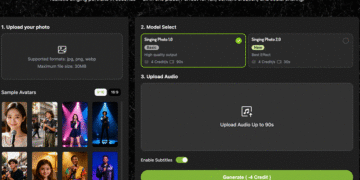Creating a novel hybrid borrowing tool combining open banking protocols and crypto-secured loans is still in the early stages. This combination has the potential to determine how digital assets interact with traditional finance.
Cryptocurrency borrowing and open banking are the most disruptive influences in finance. While open banking offers previously unthinkable access to consumer financials, the latter opens the door to liquidity against digital assets. With institutions and fintechs now considering hybrid instruments that blend the two protocols, initial pilot programs whisper promises of the dawn of a new model for decentralised-yet-compliant borrowing down the line.
New Foundations in Hybrid Lending
Incorporating open banking protocols within cryptocurrency lending entails a multidimensional borrower evaluation model. By extracting borrower transaction history and checking records with secure APIs, fintech companies consider how they could complement evaluations solely based on collateral with insights into real-world incomes. In a series of early-stage programs, the equation has enabled greater Bitcoin loans uptake in that digital units could be used as collateral, with data-based controls coming directly from traditional banking activity.
This two-part approach has been a good foundation for crypto-backed loans, but it is still struggling with sustainability at the mainstream level. Whatever Bitcoin or any other token is the primary security for these types of deals, the ease of availability of open banking insights makes eliminating credit risks, margin requirements and onboard processes possible without the sacrifice of decentralisation.
Infrastructure and Security in Prototype Stages
From a tech perspective, the integration is tricky. The hybrid systems must reconcile the decentralised blockchain custodianship with the centralised open banking network protocols. The banking APIs and the smart contracts must blend without contradictions, including powerful encryption, the secure verification of ID and sound system-to-system communication that leaves the data intact across the systems.
Because the landscape is so complex, activity is mainly at the pilot/prototype or pilot program stage. Firms experimenting with these products do so in the sandboxed or highly controlled areas and the early adopters feed back into the system integrity and data clarity. Stress testing is also required comprehensively before any commercial launch, primarily for cross-border activity. The lenders and custodians themselves harbour heavy compliance burdens for making the transfer between the fiat and the cryptoworlds traceable and secure, with ongoing tech audit requirements, real-time monitoring processes and new risk controls infrastructure as the models mature.
Legal Frameworks and Data Standards
Regulatory clarity for these hybrid lending models worldwide is still evolving. Open banking structures in the European Union and the United Kingdom are clearly defined under PSD2 and Open Banking Limited. But the incorporation of crypto assets into these structures creates new legal challenges, most prominently cross-border data handling and the verification of identity.
Whereas the peer-to-peer nature of the crypto-backed loans remains largely unregulated in most jurisdictions, open banking APIs must be subject to stringent licensing and data protection laws. To make the hybrid model more universally accepted, universal standards must be implemented to implement transactional privacy, security and anti-money laundering controls at every transaction level.
Also, the accessibility of these services for the borrower could vary within the jurisdiction. In certain regions, the regulatory environment could still prove unsupportive for including crypto collateral within the framework for regulated lending, thereby holding back institutional adoption.
Market Interest is Growing
Despite these challenges, institutional and high-net-worth interest in hybrid models continues to grow. Several fintechs and lenders have begun small-scale deployments of crypto collateralised loans that use open banking data to profile borrowers.
These financial products cater mainly to digital-native lenders and investors who maintain assets in traditional and decentralised accounts. By combining blockchain-secured collateral’s transparency with the real-time financial view that open banking enables, lenders attain a more comprehensive understanding of creditworthiness.
While still short of becoming universal, it could be an early-stage player in the direction of composable finance that intermingles new and old infrastructures, without forgoing the protection of either.
The Road Ahead
In the coming years, several key developments will determine whether the model is scalable. Additional investment in cross-chain infrastructure, matured innovative contract development and new legal terms for default and collateral are needed milestones. Importantly, standardisation in the international space would be necessary so that the differential in the regulatory approach between open banking and digital assets could be aligned.
At the same time, hybrid lenders must still balance innovation against caution. Market readiness, consumer education and security assurances will all determine whether these products reach broader audiences without losing trust.
What is becoming unmistakable is that Bitcoin loans and other cryptocurrency-backed products no longer reside in isolation within the financial system. A more inclusive and agile credit model is coming together by linking these assets with controlled data networks through open banking. Though this hybrid model exists for the time being only in niche use and pilot programs, the shift is an important conceptual one within the trajectory for borrowing over the next couple of years.
David Prior
David Prior is the editor of Today News, responsible for the overall editorial strategy. He is an NCTJ-qualified journalist with over 20 years’ experience, and is also editor of the award-winning hyperlocal news title Altrincham Today. His LinkedIn profile is here.













































































